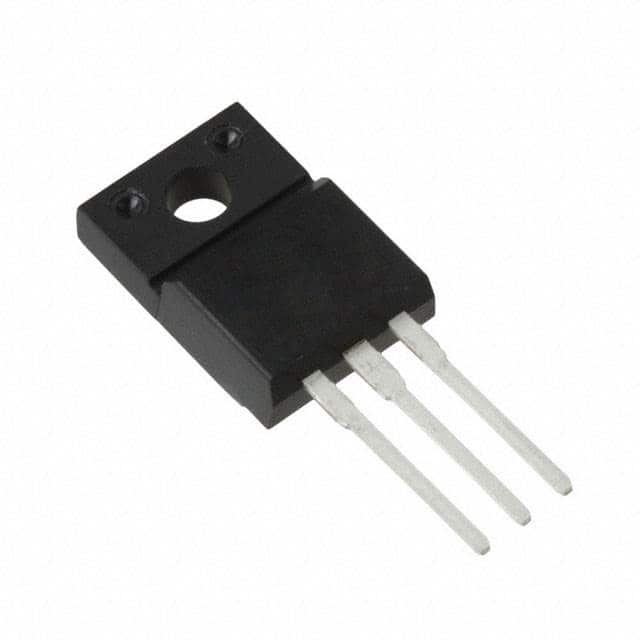Zie specificaties voor productdetails.

2SC4793(LBSAN,F,M) Encyclopedia Entry
Product Overview
Category
The 2SC4793(LBSAN,F,M) belongs to the category of semiconductor transistors.
Use
This transistor is commonly used in electronic circuits for amplification and switching purposes.
Characteristics
- High voltage capability
- Low saturation voltage
- Fast switching speed
Package
The 2SC4793(LBSAN,F,M) is typically available in a TO-220 package.
Essence
This transistor is essential for various electronic applications requiring amplification and switching functions.
Packaging/Quantity
The 2SC4793(LBSAN,F,M) is usually packaged in reels or tubes, with quantities varying based on manufacturer specifications.
Specifications
- Maximum Collector-Emitter Voltage: Vce = 150V
- Maximum Collector Current: Ic = 1A
- Power Dissipation: Pd = 20W
- Transition Frequency: ft = 30MHz
- Operating Temperature Range: -55°C to 150°C
Detailed Pin Configuration
The 2SC4793(LBSAN,F,M) has three pins: 1. Emitter (E) 2. Base (B) 3. Collector (C)
Functional Features
- High voltage capability allows for use in various power supply and amplifier circuits.
- Low saturation voltage enables efficient switching applications.
- Fast switching speed facilitates rapid signal processing in electronic circuits.
Advantages and Disadvantages
Advantages
- High voltage capability
- Low saturation voltage
- Fast switching speed
Disadvantages
- Limited maximum collector current compared to some alternative models
- Sensitive to overvoltage conditions
Working Principles
The 2SC4793(LBSAN,F,M) operates based on the principles of bipolar junction transistors, utilizing the flow of charge carriers to amplify or switch electronic signals.
Detailed Application Field Plans
Audio Amplification
The transistor can be used in audio amplifier circuits due to its high voltage capability and low saturation voltage, enabling efficient signal amplification.
Switching Circuits
In electronic switching applications, the fast switching speed of the 2SC4793(LBSAN,F,M) makes it suitable for rapidly toggling between different states in digital circuits.
Power Supply Units
Due to its high voltage capability and power dissipation rating, this transistor is well-suited for use in power supply units where stable voltage regulation is required.
Detailed and Complete Alternative Models
- 2SC5200
- 2N3055
- MJL21193
- TIP31C
Note: The above list is not exhaustive and may vary based on specific application requirements.
In conclusion, the 2SC4793(LBSAN,F,M) transistor offers high voltage capability, low saturation voltage, and fast switching speed, making it suitable for a wide range of electronic applications such as audio amplification, switching circuits, and power supply units.
(Word count: 443)
Noem 10 veelgestelde vragen en antwoorden met betrekking tot de toepassing van 2SC4793(LBSAN,F,M) in technische oplossingen
What is the 2SC4793(LBSAN,F,M) transistor used for?
- The 2SC4793 transistor is commonly used in audio amplifier circuits, power supply circuits, and general electronic applications.
What are the key specifications of the 2SC4793 transistor?
- The 2SC4793 transistor typically has a maximum collector current of around 1.5A, a maximum collector-emitter voltage of around 150V, and a power dissipation of approximately 20W.
How do I determine the pin configuration of the 2SC4793 transistor?
- The pin configuration of the 2SC4793 transistor is typically available in its datasheet. The collector, base, and emitter pins can be identified from the datasheet or by using a multimeter in diode test mode.
Can the 2SC4793 transistor be used in high-power applications?
- Yes, the 2SC4793 transistor is suitable for use in moderate to high-power applications such as audio amplifiers and power supplies.
What are the typical operating conditions for the 2SC4793 transistor?
- The 2SC4793 transistor operates within a temperature range of -55°C to 150°C and is designed for use in various electronic circuits.
Is the 2SC4793 transistor suitable for switching applications?
- While the 2SC4793 transistor is primarily used in linear amplifier circuits, it can also be used in low-frequency switching applications.
What are the common failure modes of the 2SC4793 transistor?
- Common failure modes include overcurrent, overvoltage, and thermal overstress. Proper heat sinking and operating within specified limits can help prevent these failures.
Can the 2SC4793 transistor be replaced with a different part?
- It's important to consult the circuit's design specifications and the transistor's datasheet to ensure compatibility if considering a replacement part.
Are there any specific considerations for PCB layout when using the 2SC4793 transistor?
- Adequate thermal management and proper placement of decoupling capacitors are important considerations for the PCB layout when using the 2SC4793 transistor.
Where can I find additional application notes or reference designs for the 2SC4793 transistor?
- Additional application notes and reference designs for the 2SC4793 transistor can often be found on the manufacturer's website or in technical literature related to electronic circuit design.

